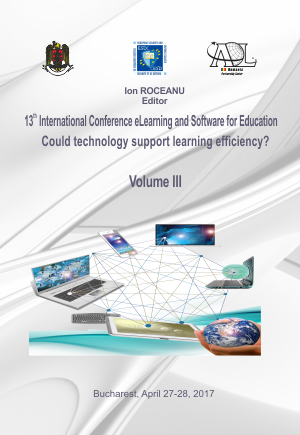E-LEARNING IN BIOMEDICAL ENGINEERING EDUCATION - A REVIEW
E-LEARNING IN BIOMEDICAL ENGINEERING EDUCATION - A REVIEW
Author(s): Dragos Arotaritei, Cristian ROTARIUSubject(s): Social Sciences
Published by: Carol I National Defence University Publishing House
Keywords: Biomedical engineering; Cloud computing; e-learning; Theory of Acceptance Model.
Summary/Abstract: The modern approaches in teaching and learning for basic engineering sciences include the usage of computer simulations, collaborative learning, problem-based learning and Internet access. The cognitive process is a complicated one, and the learning methodologies must be often focused on particular area of knowledge. Feedback messages can help in process of improvement of learning process by adjusting the accessibility and addressability via e-learning technologies and application. The review encompass the main results in e-learning technology in education using desktop simulation tools, WEB3D methods and Internet possibilities as premise to have an improvement in e-learning. courses. Use of computers and new technologies have become a crucial part of learning as well as teaching. E-learning today has been a key factor in various industries and teaching is one among them. The Virtual universities as possible online courses are mentioned also by few significant papers. The biomedical engineering (BME) is in most of things a frontier domain and represents the application of engineering principles and design concepts to biology and medicine. Biomedical Engineering (BME) represents the application of engineering principles and design concepts to biology and medicine. Important tasks as data mining, image processing, gene sequencing requires management and processing large amount of data along with important workload and sharing among many users. Cloud computing can be used in these cases and a review of recent work in these new emerging technologies is made, also. The analysis and opportunity of this choice is motivated by conclusions from literature along with personal assertions. A possibility to use for validation of TAM (Theory of Acceptance Model) is proposed to be used for each case in a custom manner.
Journal: Conference proceedings of »eLearning and Software for Education« (eLSE)
- Issue Year: 13/2017
- Issue No: 01
- Page Range: 486-491
- Page Count: 6
- Language: English

